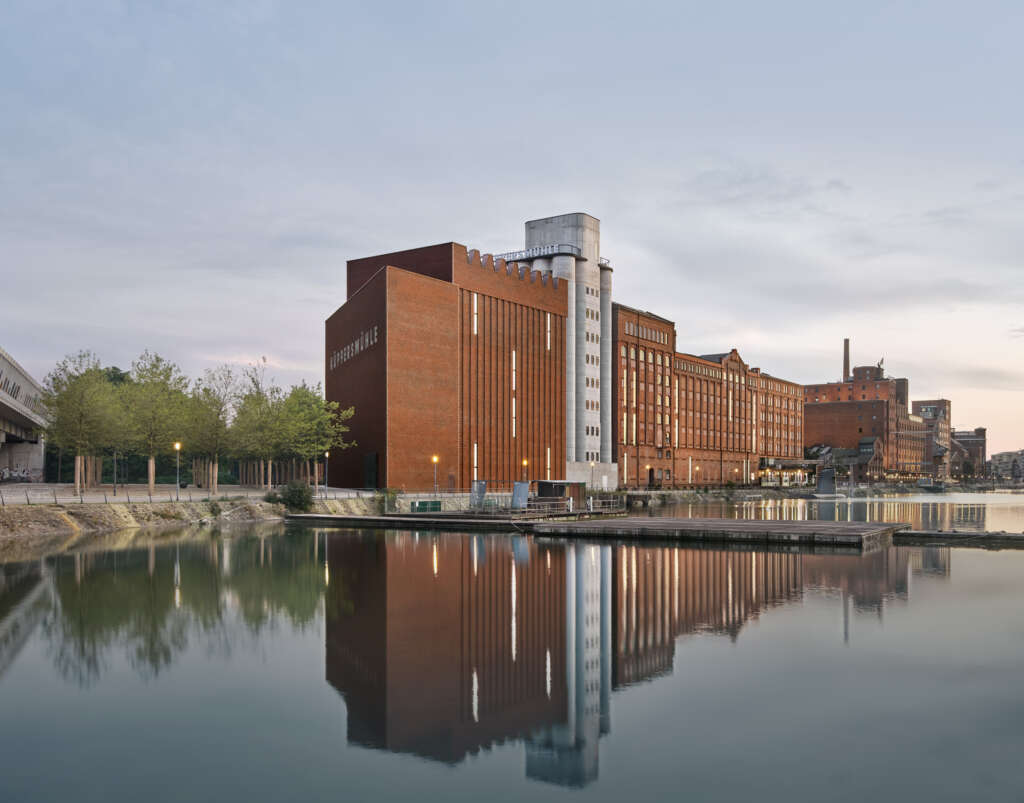
MKM Museum Küppersmühle Extension
Architect: Herzog & de Meuron
Location: Duisburg, Germany
Type: Museum
Year: 2021
Photographs: Simon Menges
The following description is courtesy of the architects. The Ruhr region is celebrating a new landmark: Following a four-year construction, the extension to the Küppersmühle Museum, designed by Herzog & de Meuron, has now reached completion. From September 25, 2021, the museum will throw open its doors to visitors once again. With the presentation of works from the Ströher Collection across an additional 2,500 m2 of space, the MKM is set to become a central venue for German and European post-war art. On display are some 300 works, spanning the immediate post-war period to the present day.
Bricks on the outside, White Cube on the inside: The MKM extension combines industrial culture with contemporary museum architecture. In keeping with the original conversion of the historical grain mill into a museum (1999), Herzog & de Meuron have once again taken their cue from the existing MKM building and the architecture of the Inner Harbour. Three structures of varying height continue the museum to form a new main edifice, which harmoniously rounds off the row of buildings flanking the harbour basin. With its striking redbrick façade, the new extension terminates in a square boasting 35 newly-planted sycamore trees – a green urban oasis.
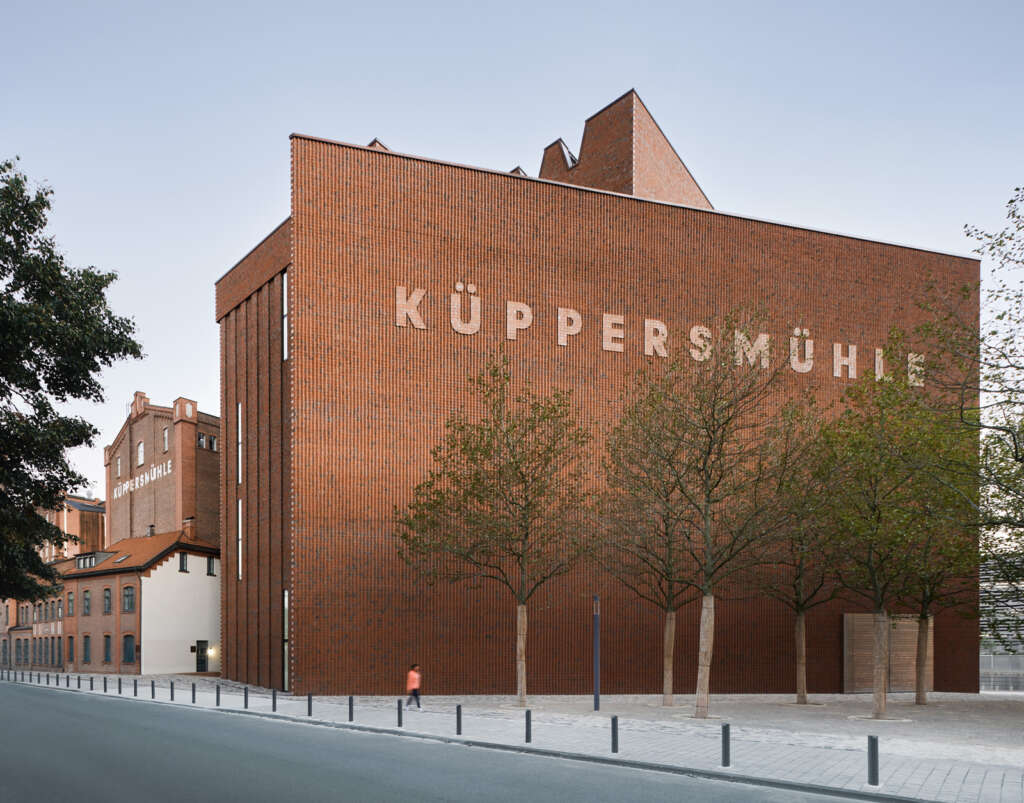
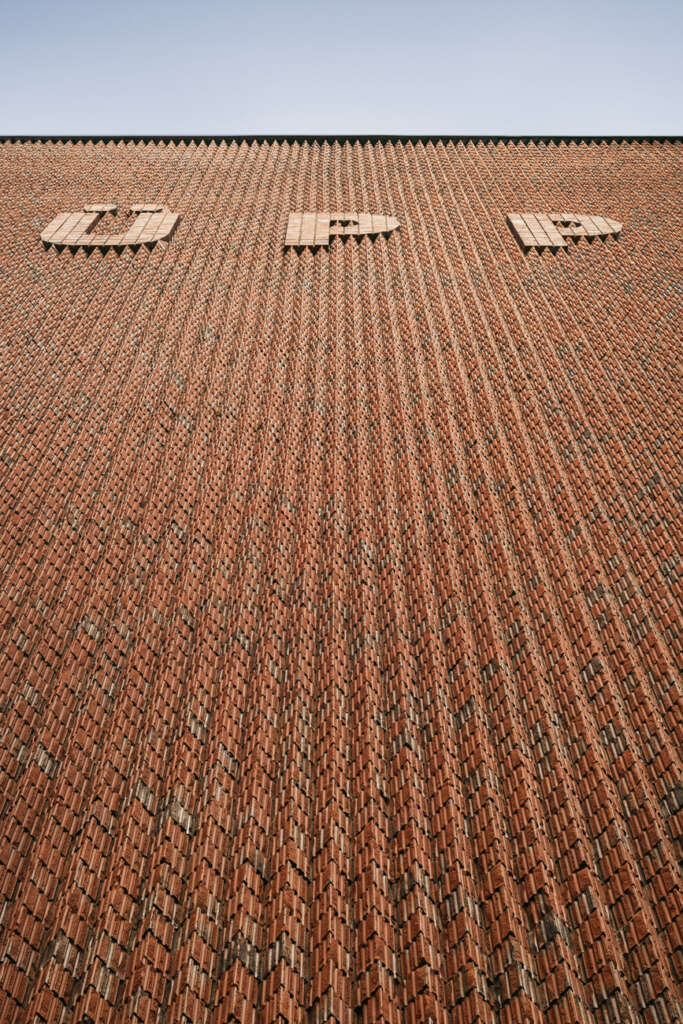
In the interior, a sequence 36 brightly-lit and clearly-structured collection rooms provide the ideal, spacious setting for the exhibited art works. As part of the extension construction, the historic silos were also refurbished and integrated into the new structure, from which bridges on the first and second upper-levels forge a connection between the new and existing galleries. Both in respect of their exterior appearance and their original material, the silos themselves have been preserved as an industrial monument. A platform on the silos, which, depending on the time of year and the weather, is accessible to the public, offers a sweeping view over the Ruhr region.
“The extension accords with the sequence of impressive historical brick structures lining the dockside.
Consequently, the new structure completes the existing museum and harbour basin in a visually
appropriate way, and forms a suitable conclusion to the row of buildings along the harbour basin. The
new project constitutes an integrating and complementary architecture.” Herzog & de Meuron, 2021

© MKM Duisburg / Herzog & de Meuron © Foto: Simon Menges 
© MKM Duisburg / Herzog & de Meuron © Foto: Simon Menges
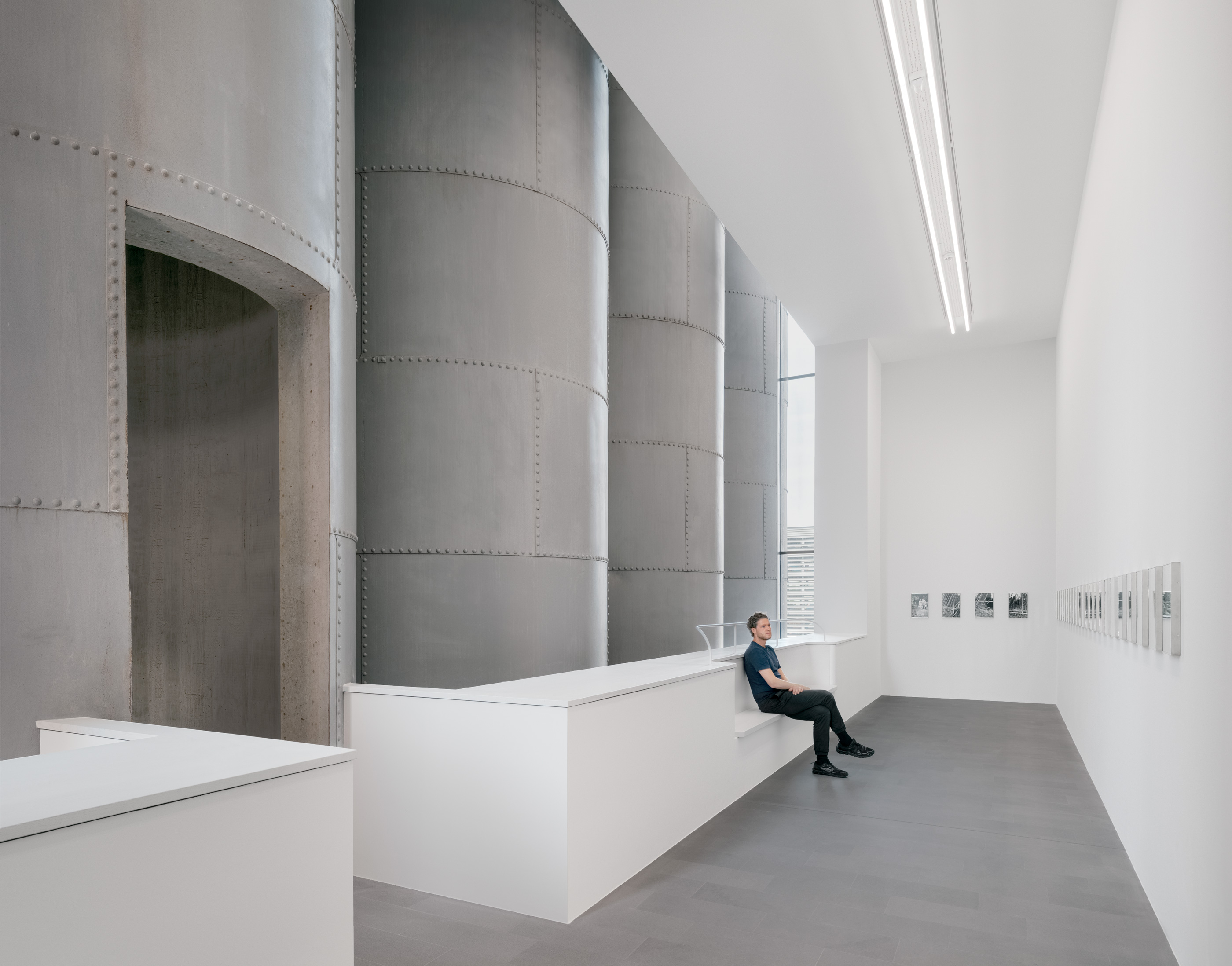
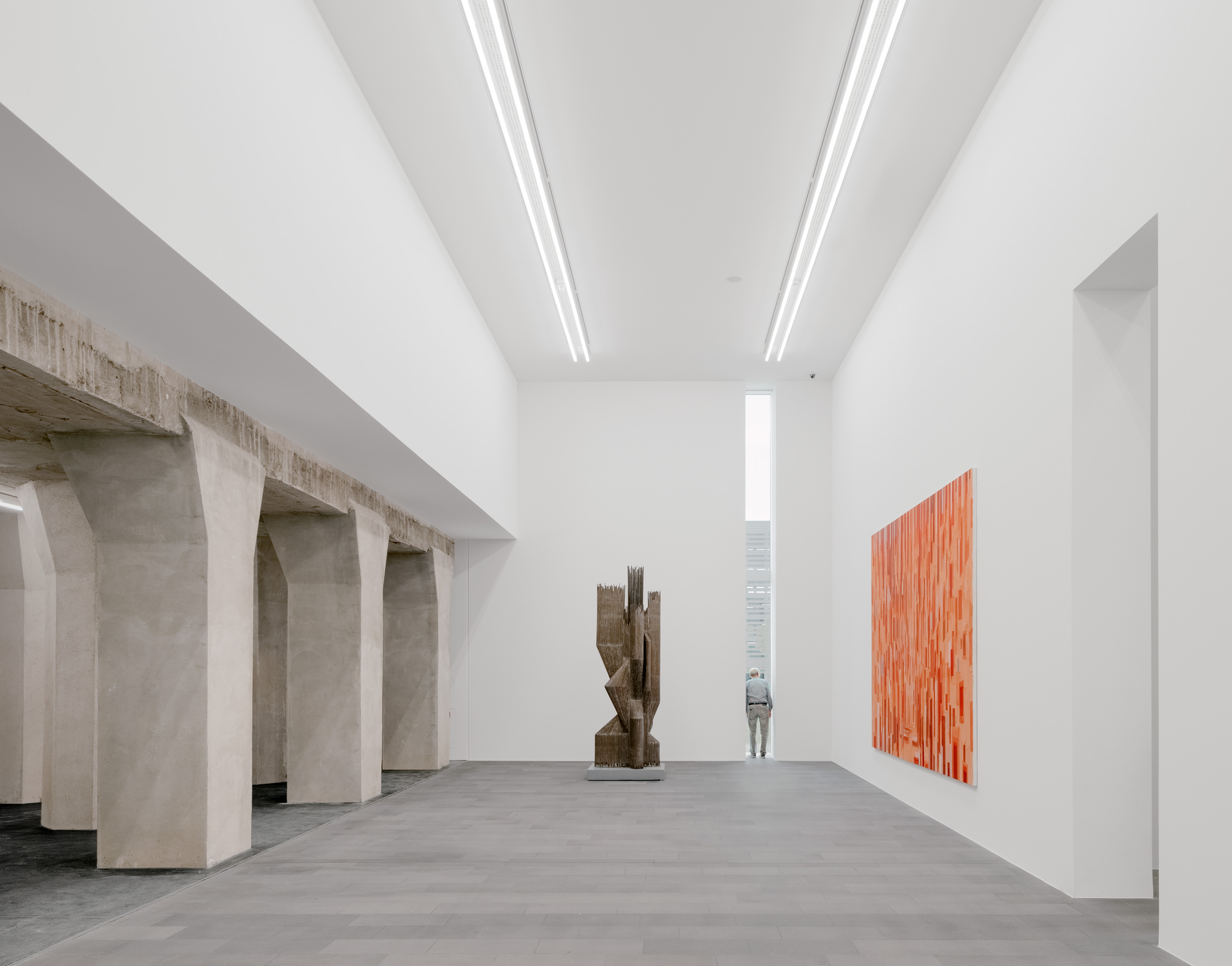
The project has been enabled by the commitment of the privately run MKM foundation, which was initiated by the collectors Sylvia and Ulrich Ströher, who have also collaborated instrumentally in the planning and hanging of the exhibition rooms. The focus in the new building will lie on the Informel and abstract works of German artists, augmented by several positions of European post-war art. The Ströher Collection features a broad selection of works by the following artists: Afro, Josef Albers, Hans Arp, Willi Baumeister, Bernd and Hilla Becher, Anna and Bernhard Blume, Peter Brüning, Alberto Burri, Rafael Canogar, Abraham David Christian, Karl Fred Dahmen, Jean Dubuffet, Jean Fautrier, Adolf Fleischmann, Rupprecht Geiger, K.O. Götz, Otto Herbert Hajek, Hans Hartung, Bernhard Heiliger, Gerhard Hoehme, Anselm Kiefer, Norbert Kricke, Georges Mathieu, Brigitte und Martin Matschinsky-Denninghoff, Georg Meistermann, Manolo Millares, Ernst Wilhelm Nay, Jean-Paul Riopelle, Otto Ritschl, Giuseppe Santomaso, Antonio Saura, David Schnell, Bernard Schultze, Emil Schumacher, Jaroslav Serpan, K.R.H. Sonderborg, Pierre Soulages, Antoni Tàpies, Fred Thieler, Hann Trier, Hans Uhlmann, Emilio Vedova, Maria Helena Vieira Da Silva, Fritz Winter and Wols.
The rooms within the existing MKM building have also largely been rehung, primarily with examples of later German post-war art from Georg Baselitz, Jürgen Brodwolf, Abraham David Christian, Günther Förg, Christoph M. Gais, Winfred Gaul, Gotthard Graubner, Ernst Hermanns, Anselm Kiefer, Imi Knoebel, Thomas Lehnerer, Markus Lüpertz, A.R. Penck, Gerhard Richter, Reiner Ruthenbeck, Michael Schoenholtz, Heinrich Siepmann, Walter Stöhrer and Rudolf Wachter.
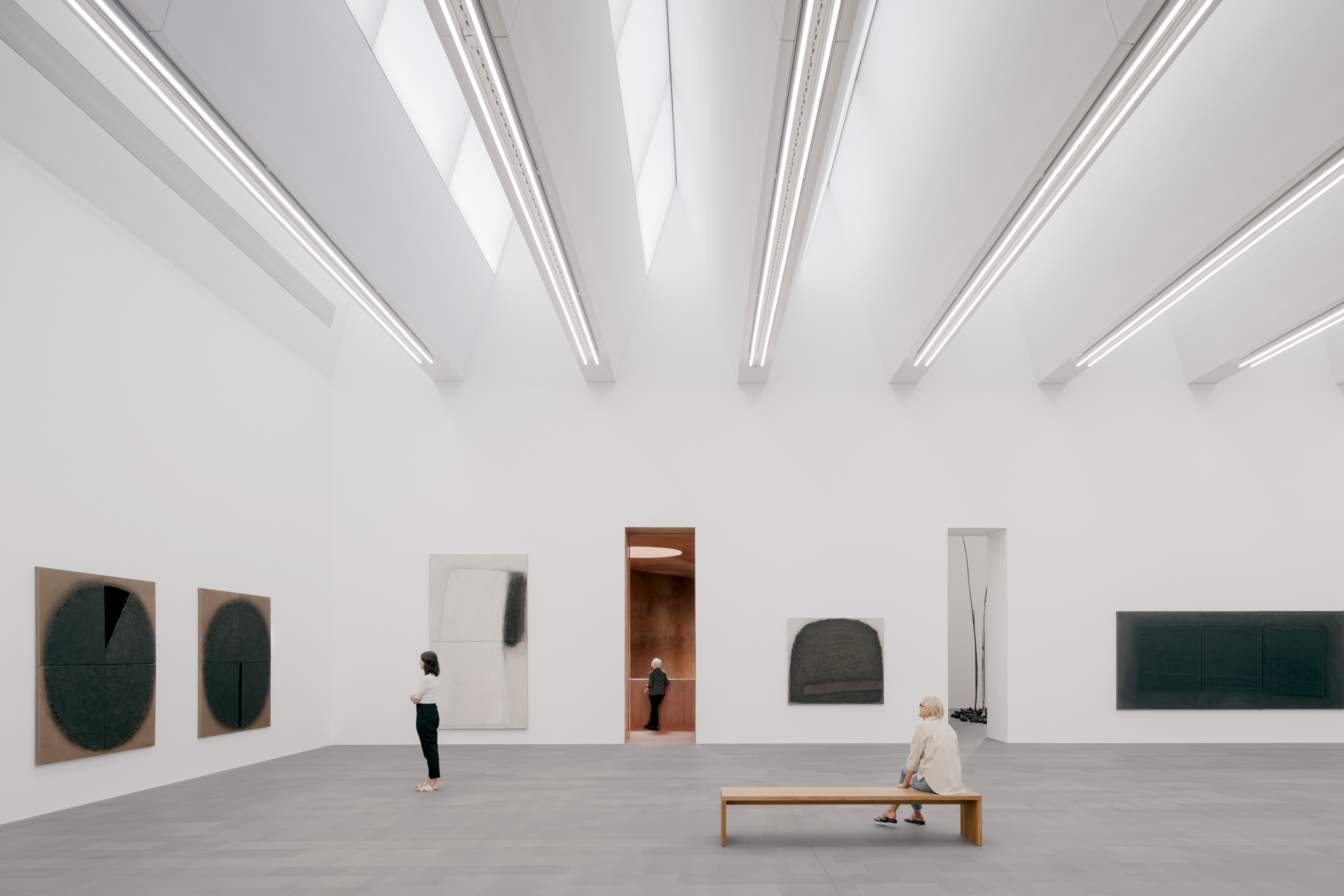
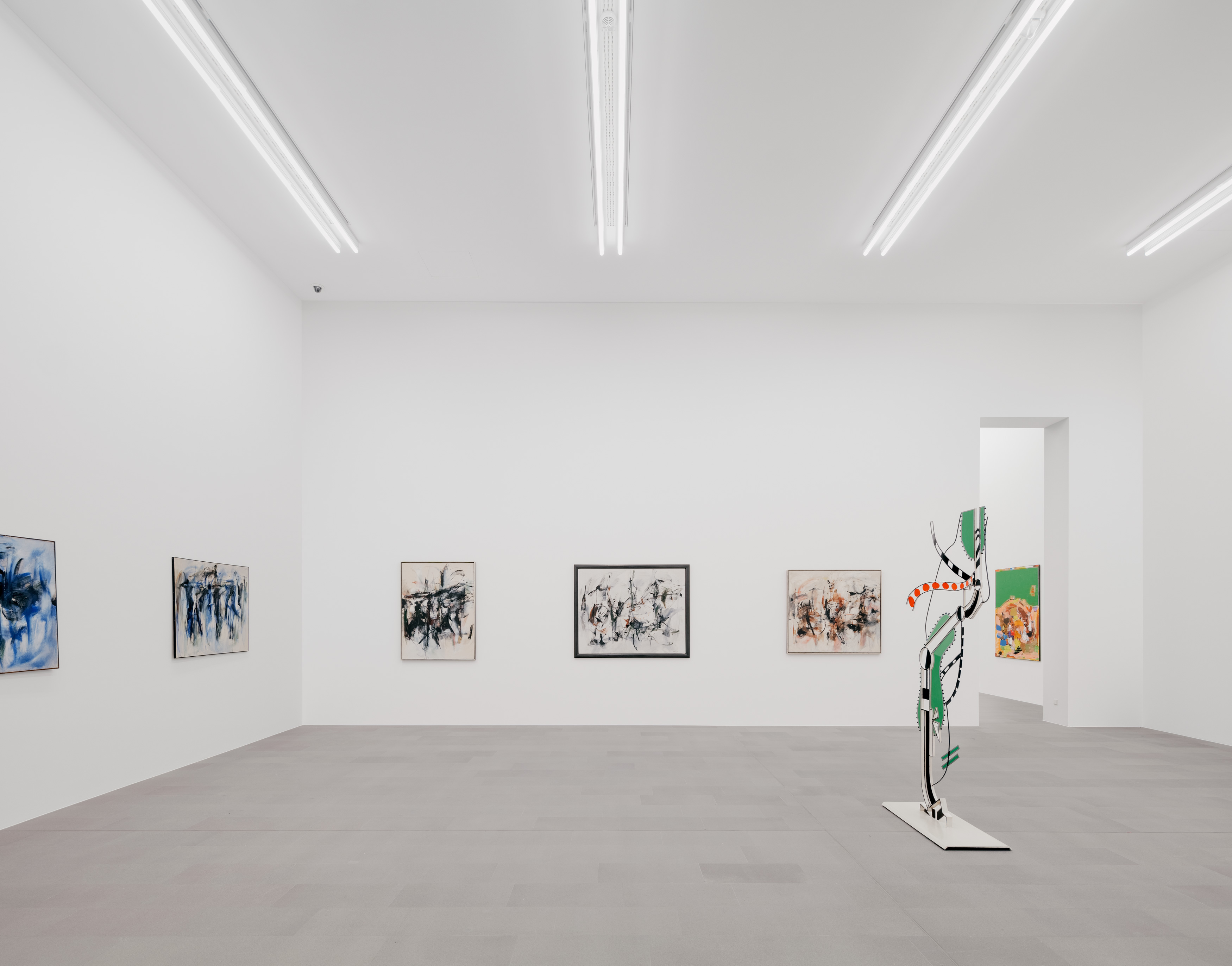


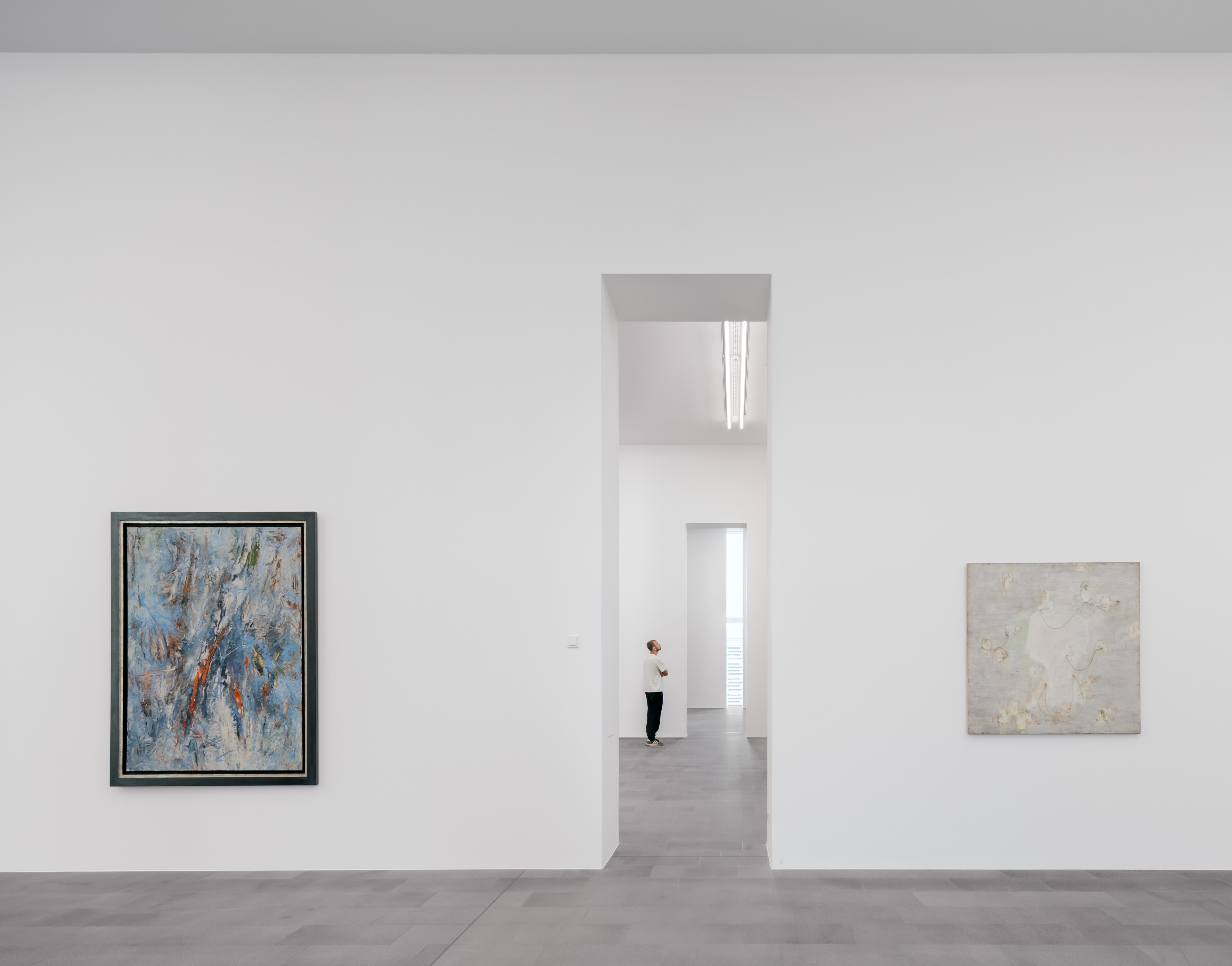
On display in the large hall on the third upper-level of the extension are works by Erwin Bechtold, as a reminiscence of his 2020 exhibition which was curtailed by the pandemic. In a later hanging, the complete cycle “Original and Forgery” by Sigmar Polke will be exhibited for the first time, and the recurrent re-hanging of rooms and unveiling of further works from the Ströher Collection forms part of the overall presentational concept. In travelling exhibitions, specific collection positions will also be showcased, as with Hanne Darboven’s recent major show “The Rainmaker” or the currently running major Andreas Gursky retrospective.
“The collection mediates an essential chapter of post-war German art history”, explains MKM director Walter Smerling. “The centrepiece, as it were, are the informel and abstract painters, the ‘founding fathers’ of German postwar art, such as Willi Baumeister, K.O. Götz or Emil Schumacher, together with their European colleagues Emilio Vedova, Maria Helena Vieira Da Silva or Wols. Also the following generation, which intensively confronted German history – Anselm Kiefer, Georg Baselitz, Gerhard Richter etc. – is also represented with key works. At the same time, the collection is highly personal, which lends it its unique character and vitality. One can sense the enthusiasm for abstraction across the decades, as evidenced by works from Walter Stöhrer, Christoph M. Gais or David Schnell. And the principal objective of the collectors, namely to present “their” artists with selections of works from across the different creative phases of their careers is a godsend for the museum. For now visitors can experience German art history first-hand, compare the teacher and student generations, and trace the artistic development of famous individual artists. The extension, and the new opening, which will see the collection presented on this scale for the first time, represents a priceless asset for the artistic landscape of the Federal Republic of Germany.”

MKM Duisburg / Herzog & de Meuron © Foto: Simon Menges 
MKM Duisburg / Herzog & de Meuron © Foto: Simon Menges 
MKM Duisburg / Herzog & de Meuron © Foto: Simon Menges
Construction History
The MKM is a striking industrial monument from the 19th century, which at the time was erected as a mill works and operated as such until its closure in 1972. On the basis of the masterplan devised by the British architect Sir Norman Foster for the Duisburg Inner Harbour, the former industrial wasteland was redeveloped into a multifunctional quayside service park – with office and apartment space, and hospitality, culture and leisure amenities – as part of the International Architecture Exhibition Emscher Park (1989–1999). A former grain mill was thus converted into the MKM Museum Küppersmühle for Modern Art.
Commissioned with the site redevelopment were the Basle-based architects Herzog & de Meuron. Between 1997-1999 they transformed the old warehouse into a centre for art, which met all the exacting requirements demanded of a modern museum – with an exhibition space measuring some 3,600 m2 across three floors, and boasting an architecture distinguished by clarity and reduction. From the inside, the spectacular winding stairtowers – fashioned from terracotta-coloured concrete – resemble a gigantic sculpture, and draws our eyes inexorably upwards.









